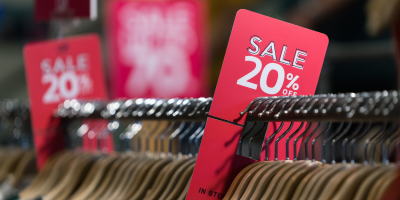
Sure, we’ve talked about using the cash envelope system as a method to save additional money, but the concept is still, according to comments and Facebook private messages, a foreign concept to many, and with good reason. While this incredibly effective method may seem like a simple process at the surface level, it does take time to perfect.
How to Use the Cash Envelope System to Budget Your Money
If you haven’t taken the time to put the following in place, you’ll likely find yourself in a state of frustration and, ultimately, giving up.
Begin With a Budget You Can Stick With
Budgeting tools are just that: tools.
You can pick a million different ones, but if you don’t take the time to actually look at your real-life numbers, you won’t be successful. Instead, do yourself a favor and put an hour together to put together an actual working budget that you can follow.
The biggest perk of an envelope system is that it helps you STICK to your budget…but it doesn’t dictate the numbers needed to maintain that budget.
Tip: Grab my FREE Family Budget Worksheet to get you started!
Start Where You Are Currently
It’s tempting to start out in pursuit of a financial goal thinking you can take it all on in one month.
Spoiler alert: the fastest way to fail is to decide that you need to do it all at once.
Instead, start where you are currently with your finances. Take a month (or three) and figure out how to deal with the concept of simply tracking your money – where it goes, what you could do with less, and some areas that you could eliminate entirely.
Don’t do it just yet, simply contemplate and discuss with your family as you go along.
Step 1:
Take the time to figure out how much you spend each month on those expenses that don’t change (i.e. mortgage/rent, cable, phone, subscriptions, etc.). You can find more resources on how to do this HERE or walk through it step by step using my favorite financial planner.
Step 2:
Decide which expenses are variable (change from month to month) and decide if you should add them to your budget as a savings fund or whether you would rather pay cash and incorporate them into your envelope system.
Step 3:
Evaluate your grocery budget. I always suggest going back three months and averaging the amount you’ve spent over that timeframe, but the decision comes down to your personal preference and family needs.
Will your family be able to survive on a $100 Grocery Budget or do you need to plan for a little more to keep everyone from revolting against you and this new budget you’ve put into place?
Step 4:
Decide which categories of your budget will definitely be incorporated into the cash envelope system. Keep in mind that a cash envelope system is a fantastic tool, but it’s only a tool and will not be useful to you if you haven’t put the work into your budget ahead of time.
In our case, some of the cash envelopes we’ve chosen to include are:
- Grocery Expenses (we break them down by week)
- Household Product Expenses (think paper towels, toilet paper, cleaning supplies)
- Spending Money (broken down for each person in our family)
- Pet Fund (cat food, litter, etc.)
- Miscellaneous (a catch-all for anything small that was missed in other areas of the budget)
- Game Night (for all things associated with having friends in to play board games)
- Eating Out (self-explanatory, right?)
Ultimately, the cash envelopes you choose should be directly related to your own family’s activities and the needs of your budget (and in the future, your savings and the things that you have a hard time saying “no” to).
Step 5:
Once you know which categories you want to incorporate in your cash-envelope system, you’ll need to decide the total amount (and smaller denominations) of cash you need.
Tip: I’ve put together a FREE worksheet to help you do just that. Find it HERE.
Revise As You Go Along
The hardest part of starting a budget and sticking with it? Realizing that it’s a work in progress. If you want to be really successful in achieving your financial goals, it’s important to take some time each and every month of the year to reevaluate what’s working and what needs to be changed.
This concept, while important for ANY budget, is especially important for those embracing the cash envelope system. Why? Because you’ll find that, for a while, there will be areas of your budget that will require additional funds and others that might not necessitate nearly as much.
For example, when you start out with your grocery budget, you might find that, while budgeting $125 per week was consistently working for you, suddenly you note that you are always $5 short when it comes to getting everything on your list, you might want to consider adding that amount to your weekly grocery budget.
A friend of mine told me just recently that after weeks of being successful with their $100 grocery budget, suddenly she and her husband were struggling to make it work for them. Once she pinpointed the reason: her husband was working out more and needed additional food, it was easy to up the budget a little to accommodate for that.
Likewise, if you are consistently budgeting $50 for your household expenses, but you regularly only use $30, then it’s safe to say that you might be able to cut the amount you put in your “household expense” envelope and either add it to another envelope that needs additional funds or put it towards your goal (Savings? Debt payoff?).
If you don’t take the time to re-evaluate, you’ll find that you are either always pulling from other categories of your budget to meet your monthly needs.
Run Out Of Money? Stop Spending!
The best part of the envelope system? When you run out of money, it’s very clear you are done spending.
Swiping a debit or credit card happens quickly and can often result in depleting the amount you’d decided to put toward your goal, possibly without you noticing until it’s too late. By using cash, you (and your family) will be aware of how much you have left in each and every category and may be able to stop the purchase ahead of time if you know that money is necessary for something else.
In our home, I find that if I know I only have $80 left for groceries this week, and I’ve followed my method for keeping track of purchases throughout the store, then I’ll stay under that amount. Honestly, I won’t have a choice, because that $80 will be all the money at my disposal for that shopping trip.
Having that set amount of money and knowing you will have to stick means that a bit of planning ahead is necessary but will result in you sticking to that budget and meeting that goal.
Find an Envelope System That Works
Of course, once you have your budget in place and have modified it to fit your needs, it’s time to pick an envelope system you’ll be happy with. I’ve seen many different methods and it’s really up to you to decide what works.
Method #1: Bank Envelopes
If you are heading to the bank for cash, then it might be really easy to ask the teller for a few cash envelopes. Typically, they are happy to give them up and you can simply write your categories on the outside of them.
Likewise, purchasing a box of envelopes can have the same effect. Just make sure they are the correct size so you don’t have to fold the bills in half.
Method #2: Zippered Pouches
While I like the inexpensive nature of using bank envelopes, I personally found that they didn’t last long. My solution: these zippered pouches from Amazon.
They are exactly the right size to fit my money, can be used with or without a binder (sold separately HERE), and I had no problem adding my own flare of color by cutting some paper and adding my labels to them. In addition, they are easy to tuck into a pocket, if necessary and are durable long-term.
Method #3: A Dedicated Cash Envelope System
Of course, there are many dedicated cash envelope systems out there, but I can honestly say that I haven’t tried any of them, mostly due to the expense. Etsy.com is a good option if you are looking for something personal, though, so I highly recommend using their search bar to find one you like, if that’s your preference.
Are You Embracing the Cash-Envelope System?
What about you?
Are you embracing the cash-envelope system as a means to help you meet your financial goals this year? If so, I’d love to hear what’s working for you and not in the comments below.
Keep in mind, it’s not meant to be perfect, just like your family and situation isn’t perfect. It does get easier, though, the more you use it, so I recommend sticking with it for six months or more before you make that final decision.
Tip: Did you grab the FREE worksheet to help you figure out your cash situation? If not, get it HERE.




